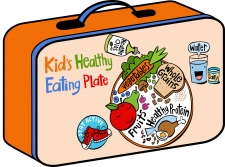Where Have All The Farmers Gone? A New Model Keeps Farmers In the Mix
Author: admin /Many quick-serve and fast-casual restaurants these days pride themselves on the freshness of their ingredients. Which is a good thing because, as you probably know, when you reduce the amount of time in the ingredient supply chain, you ultimately increase the quality (and therefore taste) of those ingredients.
On top of this, customers are becoming more educated, more health-conscious and more demanding of quality when it comes to the foods they are choosing. But what they often miss is the symbiotic relationship between those who produce the food, and those who buy it for their menus.
Restaurant Loyalty Programs: A Great Boost For Sales When Done Right
Author: admin /Contrary to popular belief, your delicious menu items are not enough to keep your customers loyal. All it takes is a new brand with better items and a little advertising (word-of-mouth or otherwise) to lure a customer away.
A good loyalty program can help mitigate this kind of brand migration, but it has to do two things consistently to work to a brand's benefit.
First of all, a loyalty program must be easy to use. The best restaurant loyalty programs are those that are chain-wide - meaning you can earn and redeem loyalty points at any location. Each franchisee has agreed to be part of the program, understanding the importance of loyalty and how it is good for the brand and, therefore, good for the location(s) they operate.
Chain-operated programs tend to be top-notch as there is a lot riding on them. If the system is down brand-wide, you get a lot of very unhappy customers brand-wide. Their loyalty becomes weakened and it's possible that they may start considering other brands.
Take It Outside: Why Outdoor Dining Means Big Bucks For Restaurant Brands
Author: admin /There's something about open-air dining. It doesn't matter if it's in a food court or outside on a patio - eating outdoors is just...great. Often, diners feel more relaxed, ore at ease and, if operated properly, can be a driving force when it comes to sales.
Outdoor dining can do many positive things for a quick serve restaurant. Today we will look at five ways outdoor space an lead to big-time results for restaurants.
1. Outdoor dining brings in the laid-back, casual crowd. You can be as stuffy as you want on the inside but a patio say "casual" to just about every diner. Patios are just about the opposite off pretentious and maintaining a patio space for diners is incredibly easy.
Deep Fried Debauchery - 4 Fried Foods Only Found in American State Fairs
Author: admin /In the U.S., state fairs are a time of celebration and fun. It's also a time where Americans push the limits of decency when it comes to fried foods. While some fried foods found at state fairs are somewhat on the benign side (think deep-fried donuts), there have been, and continue to be, other foods that...just...well...you'll just have to read on.
Here are our top 4 fried foods found at state fairs in the United States:
1. Fried Beer. Ok, it's not actually fried beer, since you can't fry liquids (and it would be a waste of beer). The food is actually a ravioli that is filled with beer and then deep fried. The ravioli is a dough, much like that of a pretzel and then cooked in oil for less than 30 seconds. Because there is alcohol in the ravioli, anyone who wants to buy one (or a dozen) must be of legal drinking age.
Ah, yes, the hamburger bun. The soft and gentle unsung bready-hero of America's most popular menu item. Baking them is a billion-dollar industry, but they're hardly discussed when it comes to menu items these days. Heck, it's been over a century since they were invented (history has yet to determine who first put them into use) and little has changed during that time.
However, there has been one tiny addition to the bun that has been one of the greatest advancements in a long time. It’s something so small, but has had a huge impact on the hamburger bun and a few big names who sell them.













